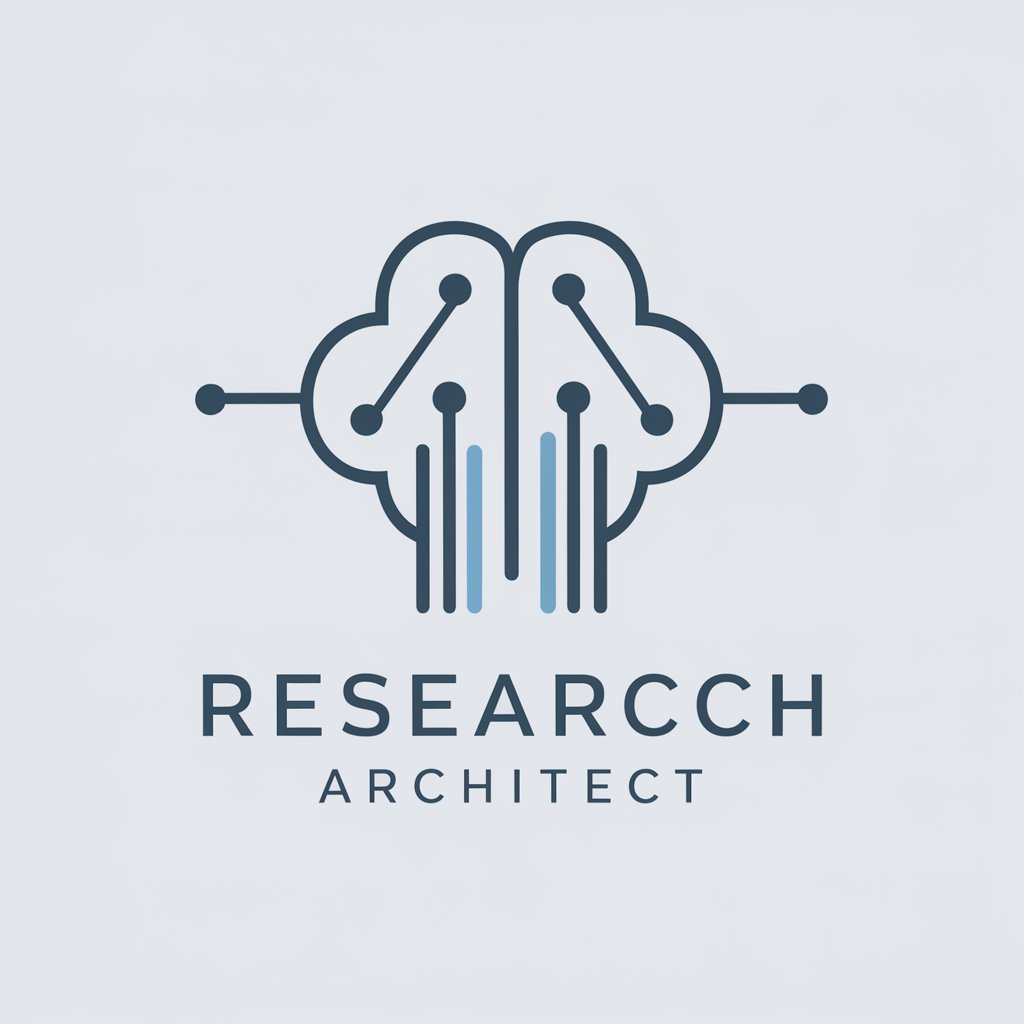Research Architect - Research Report Assistance

Welcome! Let's organize your research report effectively.
AI-powered research structuring tool
Describe how to effectively structure the methodology section of a research report...
Outline the key components of a compelling research introduction...
Explain the importance of coherence and clarity in a research discussion section...
Provide tips for writing a concise and impactful research abstract...
Get Embed Code
Introduction to Research Architect
Research Architect is designed as an advanced AI-driven assistant, focused on enhancing the process of composing and structuring research reports across a wide range of disciplines. Its core functionality revolves around providing detailed guidance on organizing research content effectively, ensuring that all critical sections of a research report, such as the abstract, introduction, methodology, results, discussion, and conclusion, are included and well-articulated. Research Architect promotes the use of clear, concise language and aims to facilitate coherence throughout the report. An example scenario illustrating its use could involve a graduate student struggling with the organization of their thesis on renewable energy sources. Research Architect would assist by suggesting an appropriate structure for their report, offering tips on writing a compelling introduction, and guiding the student on how to present their methodology and findings in a coherent and scientifically rigorous manner. Powered by ChatGPT-4o。

Main Functions of Research Architect
Guidance on Report Structure
Example
For a research report on climate change impacts, Research Architect would suggest starting with an engaging abstract that captures the essence of the research, followed by a detailed introduction that sets the context, a methodology section that outlines the research approach, a results section presenting the findings, a discussion section interpreting the results, and a conclusion that summarizes the study and suggests future research directions.
Scenario
A researcher is preparing a paper for a peer-reviewed journal but is unsure how to structure their findings effectively.
Promotion of Clear and Concise Language
Example
When a policy analyst is drafting a report on economic policies for sustainable development, Research Architect could highlight areas where the language can be made more accessible and direct, ensuring the report communicates its findings and recommendations to a broader audience effectively.
Scenario
An analyst wants to ensure their report is understandable to policymakers, stakeholders, and the general public.
Enhancement of Coherence and Flow
Example
For a thesis on the psychological effects of social media, Research Architect might suggest reordering the sections for better logical flow, ensuring that each part builds upon the previous one and leads smoothly into the next, thereby enhancing the overall readability and impact of the research.
Scenario
A graduate student has compiled all the necessary data and insights for their thesis but struggles to present it in a cohesive and engaging manner.
Ideal Users of Research Architect Services
Academic Researchers and Students
This group encompasses individuals engaged in scholarly research, including undergraduate, graduate, and doctoral students, as well as postdoctoral researchers and faculty members. They benefit from Research Architect by receiving structured guidance on how to organize their research reports, dissertations, or theses, ensuring their work meets academic standards and is presented in a coherent, impactful manner.
Policy Analysts and Think Tanks
Policy analysts and members of think tanks often produce research that influences public policy and decision-making. Research Architect aids them in crafting reports that are not only rigorous in their analysis but also clear and accessible, enabling them to communicate complex findings and recommendations to policymakers, stakeholders, and the general public effectively.
Business Professionals
Business professionals, including market researchers, business analysts, and consultants, who need to compile research findings into reports for decision-making, strategy development, or stakeholder communication. Research Architect helps them present data and insights in a structured, logical manner, enhancing the persuasiveness and clarity of their reports.

How to Use Research Architect
Start with YesChat
Begin your journey by visiting yeschat.ai for a seamless, free trial experience without the need for logging in or subscribing to ChatGPT Plus.
Define Your Research Topic
Clearly articulate the topic or question you are researching. This will help Research Architect to provide more targeted and relevant assistance.
Utilize the Outline Feature
Take advantage of the tool's ability to create structured outlines. Input your research topic or question, and let Research Architect suggest an organized framework for your report.
Draft Your Report
Use the generated outline as a guide to draft your report. Research Architect can help refine sections, suggest content, and ensure that your writing is clear and concise.
Revise and Refine
Leverage the tool for feedback on your draft. Use it to check for coherence, relevance, and clarity in your report, making necessary revisions for an optimal final document.
Try other advanced and practical GPTs
Research Partner
Elevating Research with AI Insight

Ask Ellen White
Explore Ellen White's wisdom, powered by AI

Political Bias Media Assessor
Unveil bias with AI-powered analysis.

AI Insight Writer
Expert AI insights at your fingertips.

Blog Post Composer
Crafting Intelligent, SEO-Driven Content

Best GPT Builder
Build Your AI, Simplify Your Task

Yo Mama
Where AI Meets Comedy

Yo Mama GPT
Serving Laughter on a Digital Platter

Mama Jokester
Humor at Your Fingertips: AI-Powered Jokes

The Yo Mama Jokester
Crafting laughs with cutting-edge AI.

KI-Werkzeugführer
Empowering AI, Simplifying Complexity

KI-Buddy
Unlock AI-powered insights with KI-Buddy

Research Architect Q&A
What is Research Architect?
Research Architect is a specialized AI tool designed to assist users in structuring and refining research reports. It guides the creation of effective outlines, ensures inclusion of essential sections, and promotes clarity and coherence throughout the document.
Can Research Architect suggest sources for my research?
While Research Architect is optimized for report structuring and content organization, it does not directly suggest sources. However, it can help structure your literature review section, guiding you on how to integrate and discuss sources effectively.
How does Research Architect ensure report quality?
Research Architect uses AI to provide feedback on the clarity, coherence, and structure of your report. It can suggest improvements, highlight areas that may need additional information, and ensure that your report follows a logical flow.
Is Research Architect suitable for all academic fields?
Yes, Research Architect is designed to be versatile and can assist in structuring reports across various academic disciplines. Its guidance on organization, writing style, and coherence makes it a valuable tool for any research endeavor.
How can I maximize the benefits of using Research Architect?
To maximize benefits, clearly define your research question, use the tool's outline suggestions as a foundation for your report, and utilize its feedback features to refine your document. Being open to iterative improvements based on the tool’s suggestions can significantly enhance the quality of your research report.
